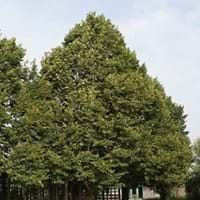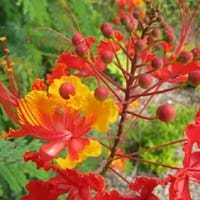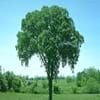Life Span
Perennial
Annual
Origin
North America, Northeastern United States, Mid-Atlantic United States, Southeastern United States, North-Central United States, Central United States, South-Central United States, Texas, Canada
Latin America and the Caribbean
Types
Not Available
Not Available
Habitat
gardens, Hardwood forests, Hillside, Tropical rainforest, Woods
Warmer regions
USDA Hardiness Zone
3-8
9-12
Sunset Zone
1a, 1b, 2a, 2b, 3a, 3b, 4, 5, 6, 7, 8, 9, 10, 11, 12, 13, 14, 15, 16, 17
H1, H2, 12, 13, 14, 15, 16, 18, 19, 20, 21, 22, 23
Habit
Upright/Erect
Upright/Erect
Flower Color
Light Yellow
Yellow, Red, Orange
Flower Color Modifier
Bicolor
Multi-Color
Fruit Color
Sandy Brown
Red
Leaf Color in Spring
Green
Green
Leaf Color in Summer
Dark Green
Green
Leaf Color in Fall
Light Yellow, Brown, Ivory
Green
Leaf Color in Winter
Not Available
Green
Leaf Shape
Heart-shaped
bipinnate
Plant Season
Spring, Summer, Fall
Spring, Summer, Fall, Winter
Sunlight
Full Sun, Partial Sun
Full Sun, Partial Sun
Growth Rate
Medium
Very Fast
Type of Soil
Clay, Loam
Loam, Sand
The pH of Soil
Acidic, Neutral, Alkaline
Acidic, Neutral, Alkaline
Soil Drainage
Well drained
Well drained
Bloom Time
Early Summer
Indeterminate
Tolerances
Not Available
Drought, Salt
Where to Plant?
Ground
Ground, Pot
How to Plant?
Seedlings, Stem Planting
Seedlings
Plant Maintenance
Medium
Medium
Watering Requirements
Requires watering in the growing season, Water Deeply, Water twice a day in the initial period
Never Over-water, Requires regular watering
In Summer
Lots of watering
Lots of watering
In Spring
Moderate
Moderate
In Winter
Average Water
Average Water
Soil pH
Acidic, Neutral, Alkaline
Acidic, Neutral, Alkaline
Soil Type
Clay, Loam
Loam, Sand
Soil Drainage Capacity
Well drained
Well drained
Sun Exposure
Full Sun, Partial Sun
Full Sun, Partial Sun
Pruning
Remove damaged leaves, Remove dead branches, Remove dead leaves
Remove damaged leaves, Remove dead branches, Remove dead leaves
Fertilizers
All-Purpose Liquid Fertilizer
All-Purpose Liquid Fertilizer
Pests and Diseases
Red blotch
Red blotch
Plant Tolerance
Drought
Drought
Flowers
Insignificant
Showy
Flower Petal Number
Single
Single
Foliage Texture
Coarse
Fine
Foliage Sheen
Matte
Matte
Attracts
Not Available
Hummingbirds, Butterflies
Allergy
Not Available
Not Available
Aesthetic Uses
Showy Purposes
Showy Purposes
Beauty Benefits
Not Available
Not Available
Edible Uses
Yes
Sometimes
Environmental Uses
Air purification
Air purification
Medicinal Uses
Bladder Infection, Cold, Cough, Diuretic, Fever, Headache, High blood pressure, Used as a sedative
anti-inflammatory, antimicrobial, Bronchitis, Chest pain, Cough, Fever, Kidney Stones, Malaria, Purgative, Sore Eyes, Sore throat
Part of Plant Used
Whole plant
Flowers, Leaves, Root
Other Uses
Beneficial species for attracting pollinators, Used as Ornamental plant, Used for its medicinal properties, Used in making musical instruments
Medicinal oil, Used As Food, Used as Ornamental plant
Used As Indoor Plant
No
Sometimes
Used As Outdoor Plant
Yes
Yes
Garden Design
Shade Trees, Street Trees
Feature Plant, Mixed Border, Screening, Wind Break, Tropical
Botanical Name
TILIA americana
CAESALPINIA pulcherrima
Common Name
American Basswood
Pride of Barbados
In Hindi
अमेरिकी Basswood
Pride of Barbados
In German
amerikanischen Basswood
Stolz von Barbados
In French
tilleul d'Amérique
Fierté de la Barbade
In Spanish
tilo americano
Orgullo de Barbados
In Greek
Αμερικανός Basswood
Υπερηφάνεια των Μπαρμπάντος
In Portuguese
Basswood americano
Offs Pridi Varvias
In Polish
Amerykańska Lipa
Pridi offs Varvias
In Latin
American Basswood
Pridi offs Varvias
Phylum
Anthophyta
Angiosperms
Class
Magnoliopsida
Magnoliopsida
Family
Tiliaceae
Fabaceae
Clade
Angiosperms, Eudicots, Rosids
Angiosperms, Eudicots, Rosids
Tribe
Tileae
Not Available
Subfamily
Tilioideae
Not Available
Number of Species
Not Available
Season and Care of American Basswood and Pride of Barbados
Season and care of American Basswood and Pride of Barbados is important to know. While considering everything about American Basswood and Pride of Barbados Care, growing season is an essential factor. American Basswood season is Spring, Summer and Fall and Pride of Barbados season is Spring, Summer and Fall. The type of soil for American Basswood is Clay, Loam and for Pride of Barbados is Loam, Sand while the PH of soil for American Basswood is Acidic, Neutral, Alkaline and for Pride of Barbados is Acidic, Neutral, Alkaline.
American Basswood and Pride of Barbados Physical Information
American Basswood and Pride of Barbados physical information is very important for comparison. American Basswood height is 1,520.00 cm and width 760.00 cm whereas Pride of Barbados height is 240.00 cm and width 240.00 cm. The color specification of American Basswood and Pride of Barbados are as follows:
American Basswood flower color: Light Yellow
American Basswood leaf color: Green
Pride of Barbados flower color: Yellow, Red and Orange
- Pride of Barbados leaf color: Green
Care of American Basswood and Pride of Barbados
Care of American Basswood and Pride of Barbados include pruning, fertilizers, watering etc. American Basswood pruning is done Remove damaged leaves, Remove dead branches and Remove dead leaves and Pride of Barbados pruning is done Remove damaged leaves, Remove dead branches and Remove dead leaves. In summer American Basswood needs Lots of watering and in winter, it needs Average Water. Whereas, in summer Pride of Barbados needs Lots of watering and in winter, it needs Average Water.





